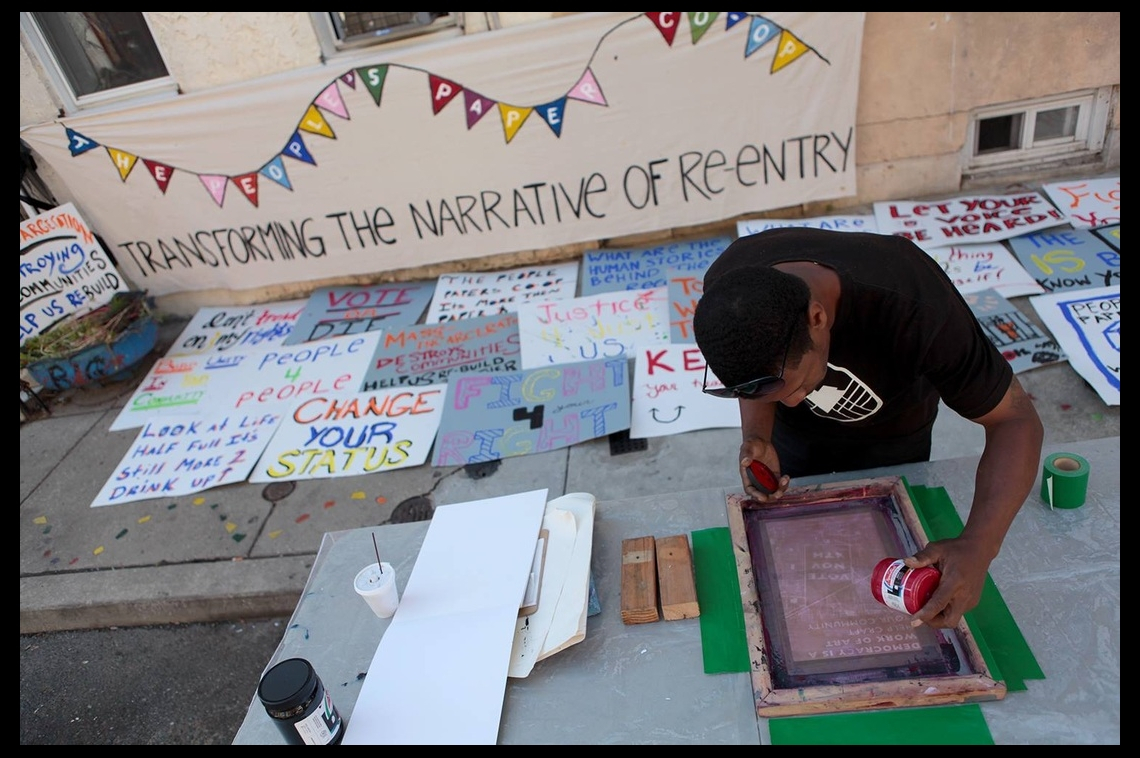
2016 has started off with a sprint as we move forward in assembling ArtPlace’s first two research working groups. In December our field scan researchers delivered working drafts of their findings, and I began collaborating with a team at the Monitor Institute, Deloitte Consulting’s social impact practice, to think through the goals and design of the working groups. Monitor’s track record of facilitating diverse groups of professionals across disciplines to build shared understanding and “aligned action” brings an exciting new way of working and thinking about our research goals.
Fast forward a few weeks, and today marks the kickoff of ArtPlace’s Public Safety Working Group in Oakland and Ashland, California. We have joined with LISC Safety (Local Initiatives Support Corporation) to convene a group of over twenty thought leaders and practitioners from across the arts, law enforcement, court systems, academia, local government, urban planning, philanthropy, and community organizing to investigate the relationship between creative placemaking and community safety. The full list of convening participants is as follows:
Roseanna Ander, Executive Director, University of Chicago Crime Lab
Hilary Bass, Executive Director, Alameda County Deputy Sheriffs’ Activities League
Enrique Betancourt, Director, Citizens Security Initiative at Chemonics International
Rev. Jeffrey Brown, President, RECAP (Rebuilding Every Community Around Peace)
Roger Cummings, Chief Cultural Producer, Juxtaposition Arts
Christine Drennon, Professor, Trinity University (Texas)
Bisa French, Captain, Richmond (California) Police Department
Jamie Hand, Director of Research Strategies, ArtPlace America
Aviva Chaya Kapust, Executive Director, The Village of Arts and Humanities
Jeremy Liu, Senior Fellow, PolicyLink
Erica Mateo, Director of Community Initiatives, Center for Court Innovation
Lynne McCormack, Director of Creative Placemaking, LISC
Amoretta Morris, Senior Associate, Annie E. Casey Foundation
Martin Neideffer, Sergeant, Alameda County Sheriff’s Office
Blake Norton, Vice President / COO, The Police Foundation
Larisa Ortiz, Principal, Larisa Ortiz Associates
Oscar Perez, Captain, Providence Police Department
Marty Pottenger, Director, Art at Work / Terra Moto Inc.
Caroline Ross, Research Associate, The Urban Institute
Julia Ryan, Director of Community Safety Initiative, LISC
Amy Sananman, Executive Director, NYC Mayor's Action Plan for Neighborhood Safety
Nina Simon, Executive Director, The Santa Cruz Museum of Arts & History
Deanna Van Buren, Founder and Design Director, Designing Justice Designing Spaces
LISC has already been a tremendous partner in this effort by bringing both their deep knowledge and history of a place-based approach to community safety, as well as their immense network of community development and law enforcement professionals to bear on the conversation. The recent LISC Stories essay, “Trust is the defining issue of our time,” provides a great overview of their current safety initiatives, including their leadership role as technical assistance providers for the Department of Justice’s Byrne Criminal Justice Innovation Program (BCJI).
Local hosts in the Bay Area this week include the Alameda County Deputy Sheriffs’ Activities League and Betti Ono Gallery, and we will be treated to a special performance of Cops and Robbers by Alameda County Deputy Jorge ‘Jihno’ Ferreira, an officer and musician who has turned to theater to explore “the dysfunctional relationship between law enforcement, the media, and the Black community” in Oakland following an officer-involved shooting.
***
So what will happen once we get this inspiring group of people in the room together?
Building on the findings surfaced by the Urban Institute’s Caroline Ross in the public safety field scan – which we will release publicly following the working group’s feedback – the group will identify “bright spots” across creative placemaking practice and match them to priority goals and needs within the field of public safety.
The arts’ ability to promote empathy and understanding, for example, holds great potential in communities where tensions between community members and law enforcement run high. Working group participant Marty Pottenger is an artist who has worked with the Portland (Maine) Police Department for decades on collaborative poetry and theater projects such as Thin Blue Lines and Forest City Times; we will hear about both her successes and challenges in doing this kind of work, and officers and sheriffs in the working group will help us think through the viability of such efforts in other contexts.
As another example, that artistic practice can support well-being and provide new skill sets speaks to a critical point in the lives of individuals who are returning to their communities after justice system involvement. We will hear from working group member Aviva Kapust about the People’s Paper Co-op project at the Village of Arts and Humanities in Philadelphia, an extraordinary example of a restorative reentry program built around creative practice.
Ultimately we will lean on diversity of perspectives in the working group, as well as our collective desire to contribute to public safety goals in communities across the country, to recommend specific resources and tools that (1) make the case that the arts have positive, measurable impacts on community safety and (2) provide a pathway for other practitioners in both fields to take up this work.
Stay tuned for more information and materials as the Public Safety Working Group gets up and running.





